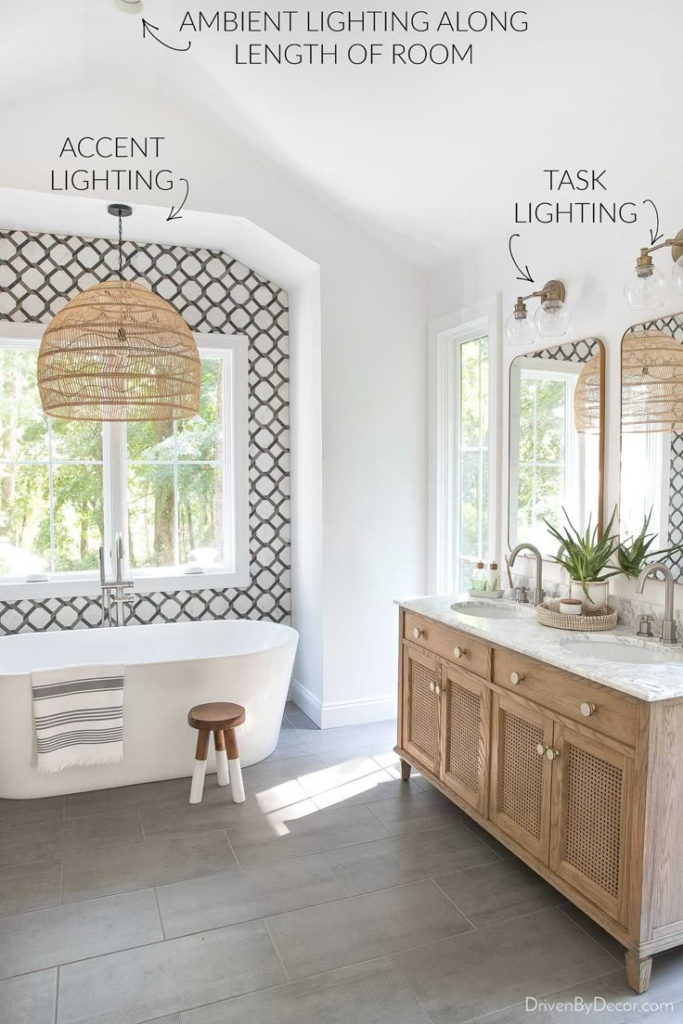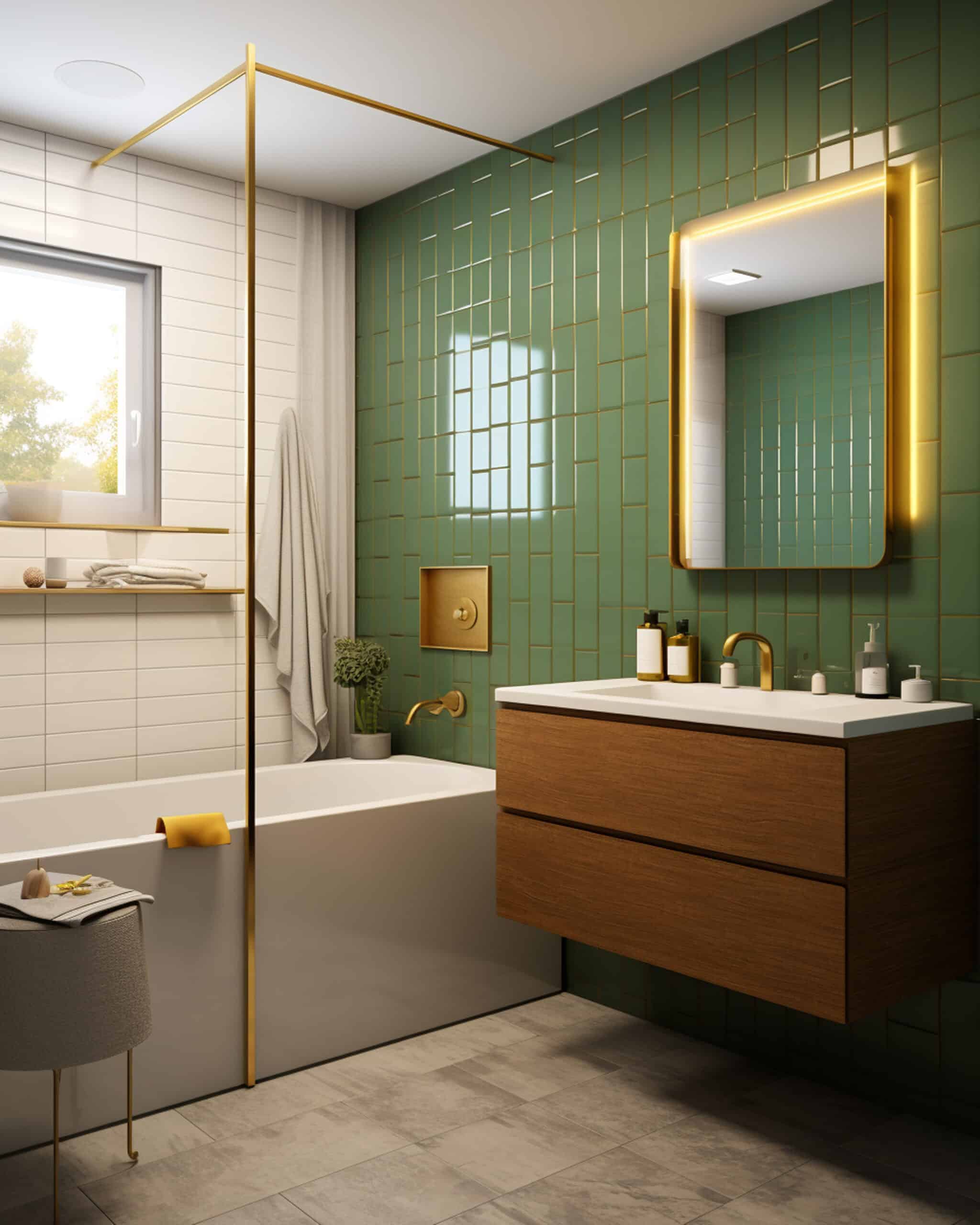In modern home design, lighting is more than just a functional necessity—it’s a powerful tool that shapes the mood, enhances functionality, and highlights architectural features. By thoughtfully combining ambient, task, and accent lighting, homeowners can create spaces that are both inviting and practical. This approach, known as “lighting layers,” is essential in kitchens and bathrooms, where both utility and atmosphere are paramount.

Understanding the Three Layers of Lighting
Effective lighting design relies on the strategic use of three primary layers: ambient, task, and accent lighting. Each serves a distinct purpose, and together, they create a harmonious and adaptable environment.
Ambient Lighting: The Foundation
Ambient lighting provides the overall illumination of a space, setting the tone and ensuring visibility. In kitchens and bathrooms, this can be achieved through ceiling-mounted fixtures, recessed lights, or wall-mounted sconces. The goal is to create a uniform light level that makes the space feel open and welcoming.
Task Lighting: Focused Functionality
Task lighting targets specific areas where activities such as cooking, grooming, or reading occur. In kitchens, under-cabinet lights illuminate countertops, while pendant lights can brighten islands or dining areas. In bathrooms, vanity lights flanking mirrors provide the clarity needed for grooming tasks.
Accent Lighting: Highlighting Features
Accent lighting adds depth and dimension by highlighting architectural details, artwork, or decorative elements. In kitchens, this might include lighting inside glass-front cabinets or above open shelving. In bathrooms, accent lights can emphasize a beautiful tile wall or a freestanding bathtub.
Applying Lighting Layers in Kitchens
Kitchens are multifunctional spaces that benefit greatly from layered lighting.
- Ambient Lighting: Use recessed ceiling lights or a central fixture to provide general illumination.
- Task Lighting: Install under-cabinet lights to brighten countertops and pendant lights over islands for focused tasks.
- Accent Lighting: Incorporate LED strips above cabinets or inside glass-front cabinets to showcase design elements.
This combination ensures that the kitchen is both functional for cooking and comfortable for socializing.
Applying Lighting Layers in Bathrooms

Bathrooms require a balance between practicality and relaxation, making layered lighting essential.
- Ambient Lighting: Ceiling-mounted fixtures or recessed lights provide overall brightness.
- Task Lighting: Vanity lights placed on either side of the mirror reduce shadows and provide clear illumination for grooming.
- Accent Lighting: Use LED strips under floating vanities or around mirrors to add a spa-like ambiance.
By layering these lighting types, bathrooms can transform into serene retreats that cater to daily routines and relaxation.
Tips for Effective Lighting Layering
- Dimmer Switches: Install dimmers to adjust light levels according to the time of day and desired mood.
- Color Temperature: Choose warm light (2700K–3000K) for a cozy atmosphere and cooler light (3500K–4100K) for task-oriented areas.
- Fixture Selection: Combine different types of fixtures—such as chandeliers, pendants, and sconces—to add visual interest and flexibility.
Implementing these tips enhances the effectiveness of lighting layers, creating spaces that are both beautiful and functional.
Mastering Layering
Mastering lighting layers is key to designing kitchens and bathrooms that are both practical and aesthetically pleasing. By thoughtfully combining ambient, task, and accent lighting, homeowners can create environments that cater to various needs and moods. Whether renovating or building anew, considering lighting layers will ensure that these essential spaces are illuminated to their fullest potential.



